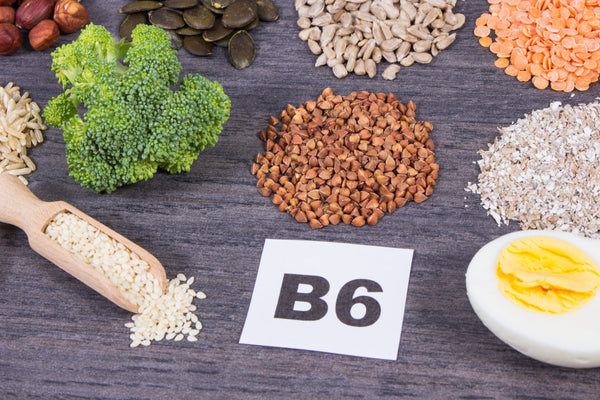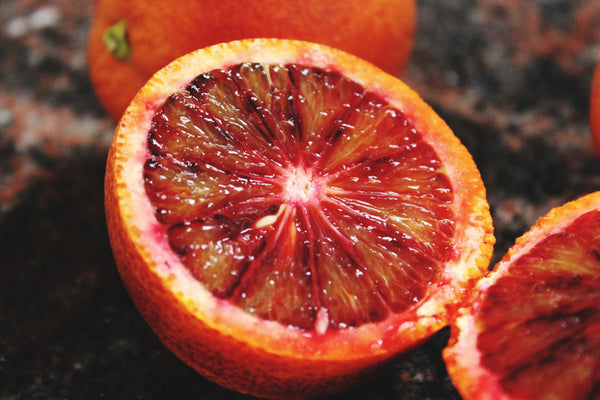
Iodine and Children: Benefits, Intake and Side Effects

As a parent, you always pay attention to the health and well-being of your child. You make sure they eat vegetables and get enough protein, but vitamins and minerals are a little harder to track.
If you're concerned about your child's intake of necessary minerals such as iodine, here's what to know about iodine in the diet, iodine deficiency, and the recommended daily amount of iodine for developing children.
What is iodine?
Iodine (sometimes called iodide ) is a mineral that is abundant throughout the earth. It occurs naturally in saltwater oceans and fertile soils. Many natural minerals are beneficial for human, animal and plant life.
What are the Benefits of Iodine for the Body?
The body cannot make thyroid hormone without iodine. These hormones are important for more than just thyroid function . The body also uses the same hormones for brain and bone development. Without micronutrients like iodine, children cannot grow.
The thyroid is responsible for regulating metabolism , which is one of the most important processes in the body. Metabolism is responsible for processing every nutrient , vitamin, and mineral you eat. It also helps the body to reap a lot of energy from the food consumed.
Iodine is very important for pregnant people, because babies need iodine to grow to term. This is just as important during infancy when children are growing at a rapid rate. If you are pregnant or breastfeeding, it is very important to receive adequate amounts of iodine.
How Much Iodine Does a Child Need?
The body only needs a small amount of iodine to produce its many benefits. Iodine intake is measured in micrograms (mcg) rather than milligrams (mg). Guidelines for dietary iodine allowances are as follows:
- Newborns up to 6 months – 110 mcg of iodine daily
- Seven months to 12 months – 130 mcg of iodine daily
- One year old to 8 years old – 90 mcg of iodine daily
- Nine years to 13 years – 120 mcg of iodine daily
- 14 years and over – 150 mcg of iodine daily
- During pregnancy – 220 mcg of iodine daily
- While breastfeeding – 290 mcg of iodine daily
Iodine status needs to be monitored closely during pregnancy and infancy . If you have ever had concerns that your child might not be receiving enough iodine , you need to seek advice from a pediatrician right away.
Concerns should always be taken seriously. It's better to be too careful and ask a lot of questions, even though your child's intake of iodine is sufficient. False alarms are always better than a worse case scenario.
Premature infants and infants with malabsorption may be at increased risk of deficiency. Talk to your pediatrician about your child's special needs if special circumstances surround their health.
Can Children Be Iodine Deficiency?
Iodine deficiency is very rare in developed countries. Their symptoms are visible and severe. Iodine deficiency usually begins with swelling around the thyroid gland , which is located at the front of the neck.
Unexpected changes in weight and appetite may occur, and weakness and fatigue may occur.
People with iodine deficiency often feel very cold. Their skin may become dry and scaly, and they may lose their hair. Over time, iodine deficiency causes cognitive decline.
People with iodine deficiency have difficulty reading, learning, remembering, and reasoning. This is because thyroid hormone plays a key role in brain development. Without adequate amounts of these hormones, children can become intellectually disabled.
Children with iodine deficiency may never reach their full intellectual capacity.
This severe type of iodine deficiency is usually only seen in developing countries, and international organizations for the health and well-being of children have taken steps to provide more sources of iodine to children who may be at risk.
Dietary Sources of Iodine for Kids
Iodine is a bit hard to come by. While many foods contain necessary vitamins, iodine only occurs naturally in some foods, and it is difficult to find good sources of iodine .
While certain vitamins, minerals, and trace elements (such as vitamin C ) are available in abundance, iodine requires supervision. Some parents may find barriers to adequate dietary iodine intake based on food groups that are naturally rich in iodine.
Iodized salt
Salt is one of the most common cooking ingredients. Most recipes call for salt . That's why so many salt manufacturers add iodine to their finished products. This is an easy way to incorporate iodine into most foods.
Iodine content will vary from brand to brand. Most brands include about 150 micrograms of iodine per teaspoon of salt . A little salt helps a lot, and children shouldn't eat too much salt . High salt intake can lead to bloating, water retention, urination and kidney function problems, and cardiovascular complications.
Many people have switched to using sea salt , believing it to be a healthier alternative to table salt . In fact, sea salt and table salt are almost identical nutritionally. The trace minerals that naturally occur in sea salt are not large enough to have a positive impact on overall health. Sea salt does not contain large amounts of iodine , making it an effective method of mineral delivery.
While iodized salt is excellent as a potential source of iodine, it is important to remember that salt should be used very sparingly. Salt cannot be your child's only source of iodine. A small sprinkling of salt on the baked sweet potato slices will enhance their taste and give them a hint of this important mineral.
Fish and Seafood
Fish such as cod , tuna , salmon , shrimp, and sea vegetables such as seaweed, naturally contain iodine. They absorb it from the ocean and pass it on to you when you eat it. Iodine content may not be consistent or predictable from fish to fish, but the amount should be sufficient.
If your child will or can eat fish or shrimp, consider serving them several times a week to increase the overall iodine content of your child's diet.
Dairy products
A cup of milk or a serving of yogurt can provide enough iodine to meet your child's recommended daily intake. It is important to note that plant-based milk alternatives or milk substitutes do not contain large amounts of iodine. In fact, with the exception of soy milk, no plant-based milk alternative is as nutritious or healthy as milk.




